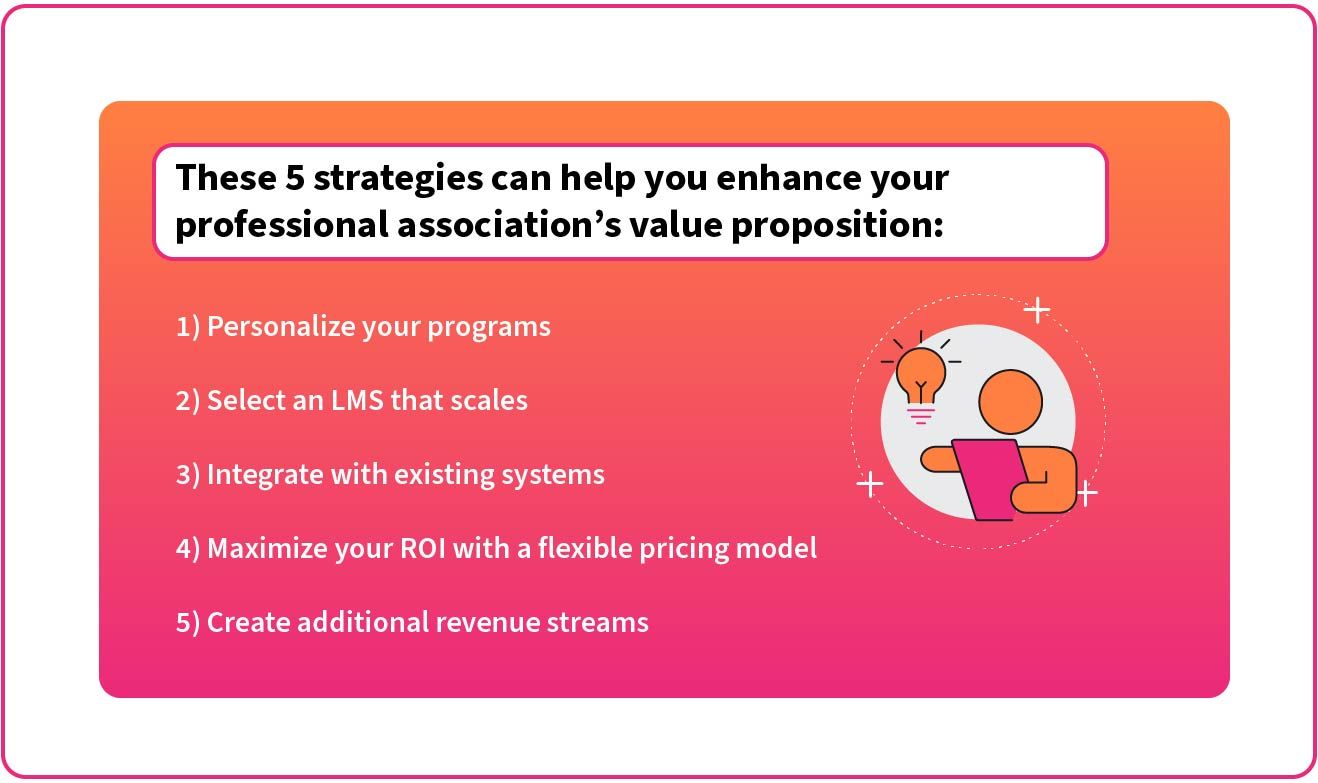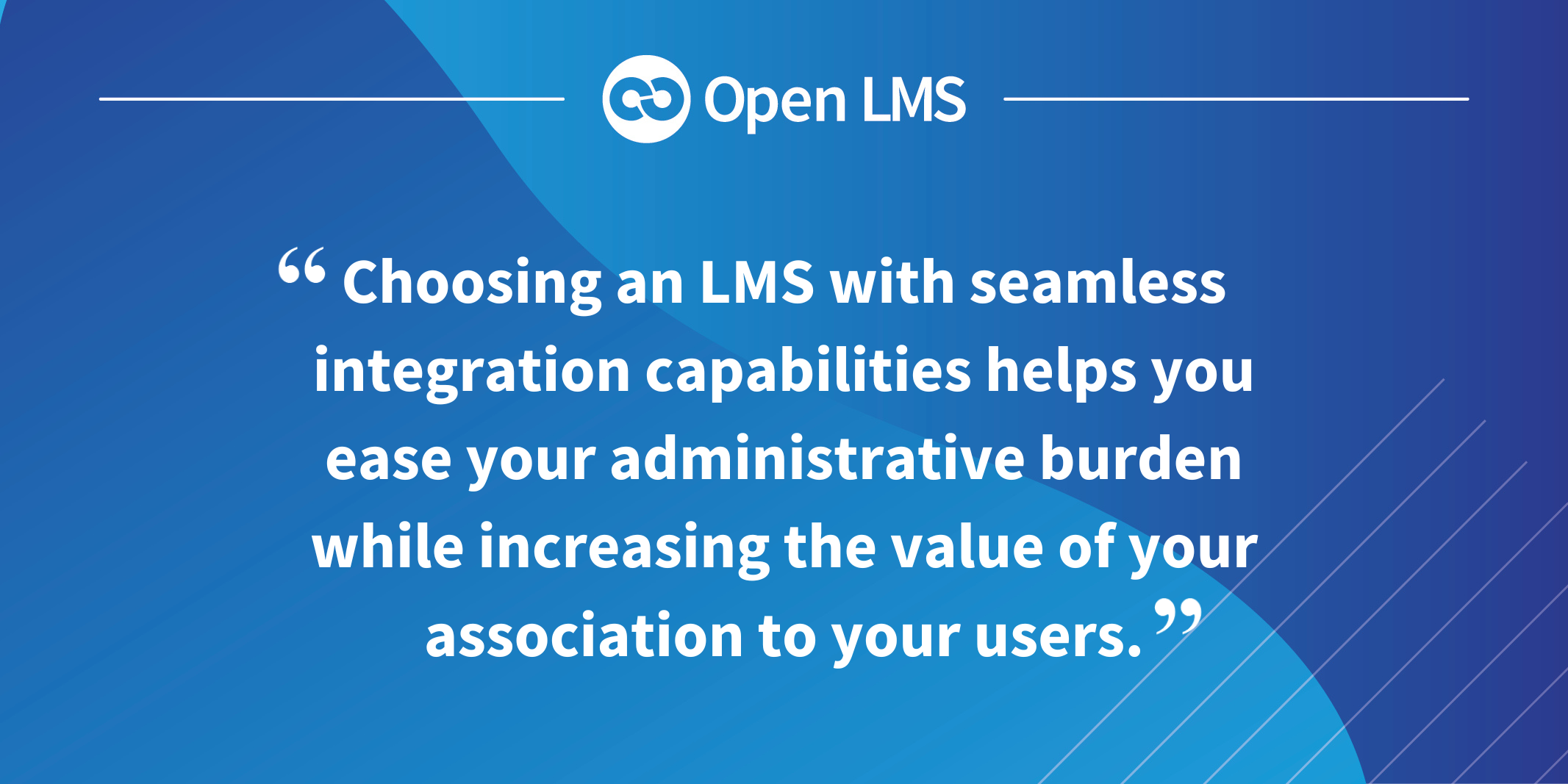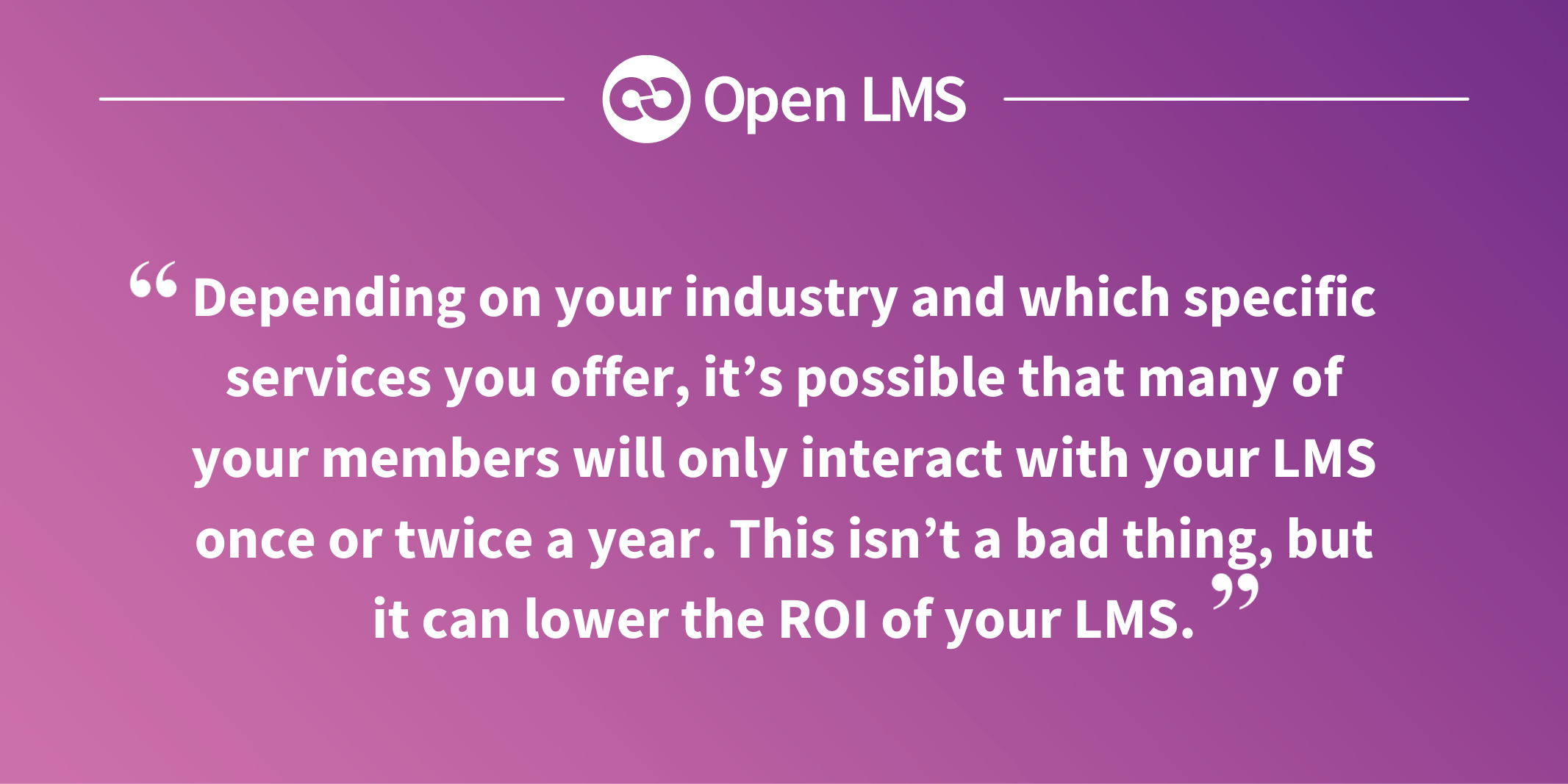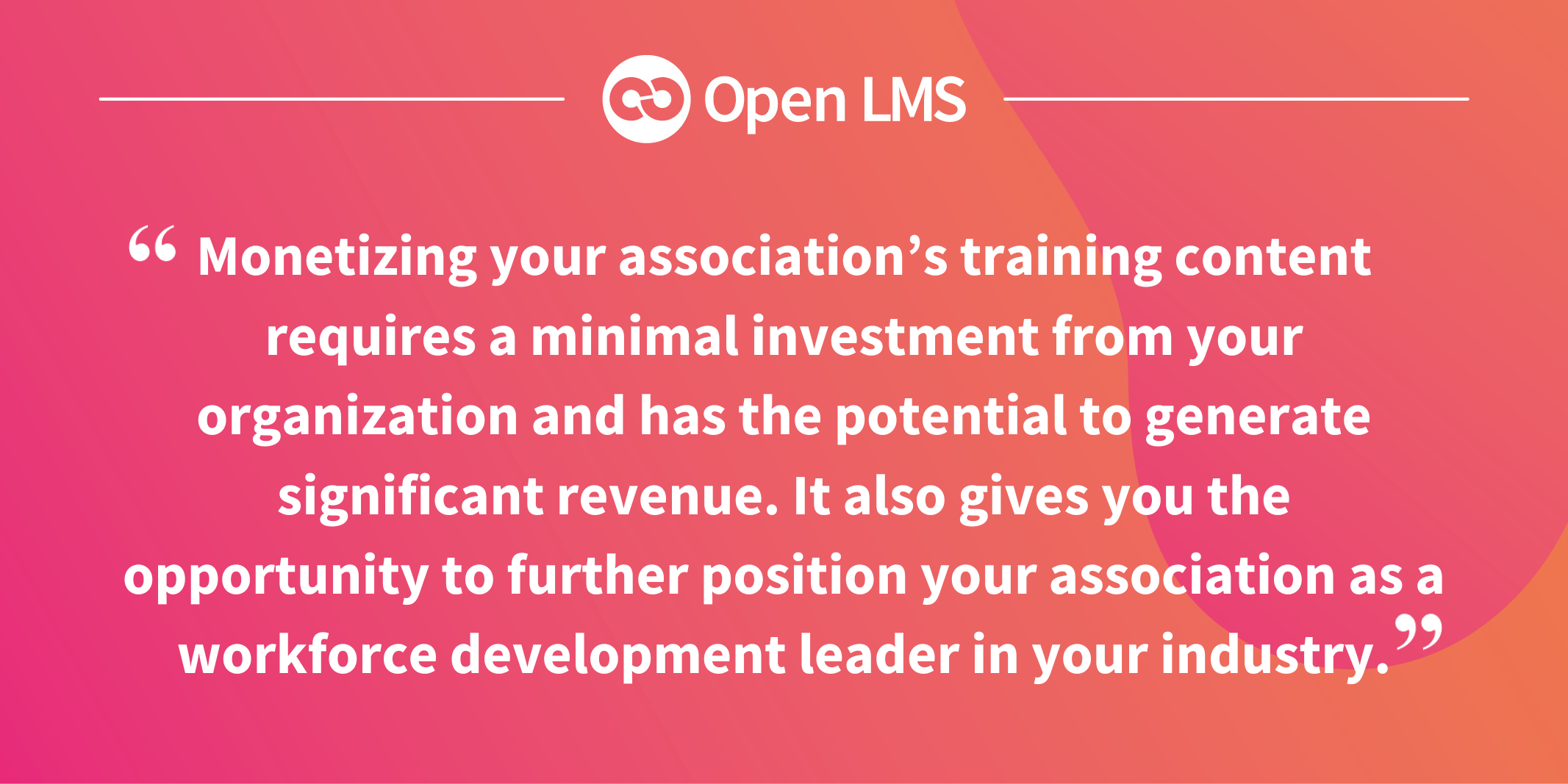5 Strategies to Help You Enhance Your Professional Association’s Value Proposition
Catering to everyone’s professional needs can be a challenge for professional associations in any industry, especially when five generations—each with varying perspectives, goals, and values—are working alongside one another. When you’re trying to meet the many needs of a multi-generational association, it can be difficult to clearly define how your organization brings exceptional value to all its members. Likewise, devising strategies to attract and retain members gets tricky when you’re struggling to define what makes your association valuable. That’s where learning management systems (LMSs) come into play.
When leveraged strategically, you can use an LMS to personalize development and growth experiences for your members, helping you meet the needs of a diverse group of early, mid-, and late-career professionals. Despite their generational differences, your members all have one thing in common: they joined your association to increase their professional knowledge and advance their careers. Data from your LMS can help you understand what resonates with your members, making it easier for you to identify what’s most valuable to your audience.
Once you’ve determined your most valuable offerings, you can devise a strategic member retention and attraction plan. Additionally, the right platform can help you make your association’s learning processes more efficient so your training team can spend less time on administrative tasks and devote more resources to enhancing your organization.
The following strategies will help you get more out of your learning platform and uncover your professional association’s unique value proposition.
HANDPICKED FOR YOU | ‘Why Traditional L&D Strategies No Longer Work (And What to Do Instead)’

Strategy 1: Personalize Your Programs
Your association’s members may have jobs in the same industry—and many likely have the same role—but having the same high-level career interests doesn’t mean they all want to follow the same path. There’s usually an array of specialties that someone can pursue within a given field. For example, members of a professional nursing association might all benefit from some high-level training courses, but it’s highly unlikely that a program covering pediatric care best practices would be relevant for someone who works primarily with elderly patients in a retirement facility.
Generic, one-size-fits-all programs can’t serve everyone’s needs equally. Personalized learning pathways help your members prepare for their next career move by teaching them the relevant skills and competencies they’ll need to be successful.
A sophisticated LMS will let you offer customized training programs that align with your members’ goals. Some systems leverage AI-powered tools to suggest follow-up learning materials based on a user’s programs and course completion history. Taking advantage of these LMS tools makes it easy for you to customize programs at the individual level, ensuring each member receives a high-value learning experience.
Additionally, you can configure your LMS to include customized programs for different audiences. Your association likely serves more than just its members. You might also be training internal staff or onboarding volunteers. Like your diverse membership, these internal groups have their own needs, goals, and expectations that must be met for them to gain meaningful value from your association. A configurable learning platform lets you easily manage and maintain separate training programs tailored to each group—all within the same LMS.
Features like user segmentation, role-based access, and custom learning paths let you tailor the training journey for each user group while keeping your administrative processes centralized and efficient.
For example, you can:
- Offer audience-specific course catalogs with relevant resources
- Automate enrollments based on user roles or registration data
- Restrict visibility of certain content to appropriate groups
- Track analytics separately by audience to understand engagement trends
With these capabilities in place, you won’t have to juggle disconnected systems or patch together workarounds. Everything is handled within the same platform, giving each audience the personalized experience it needs while easing your administrative burden.
LEARN HOW TO IMPLEMENT A PERSONALIZED DEVELOPMENT STRATEGY | ‘Personalizing Professional Development: What You Need to Know’
Strategy 2: Select an LMS That Scales
It’s likely that your association experiences ebbs and flows in activity throughout the year. You probably have an influx of users when credentials are nearing their expiration, but then there’s a lull once those essential licenses have been renewed. Handling traffic spikes during peak enrollment periods can stretch your infrastructure thin. The stakes are even higher if you administer crucial exams and experience network slowdowns or outages during your users’ assessments.
A systems crash right before a major exam window or long load times during enrollment season are disruptive and damaging for your members. These issues erode confidence for users and create hours of additional work to correct the problem for your software administrator and IT department.
Improving the value of your professional association means ensuring that your members aren’t interrupted during high-traffic situations. Choosing a flexible platform that can be scaled up or down based on your needs ensures that your association can handle fluctuations in traffic, and your members are more likely to have a positive experience.
Look for an LMS that includes:
- Scalable cloud infrastructure that can handle large surges in concurrent users
- Redundancies and failover systems to prevent outages
- Load balancing to distribute demand across servers
- Real-time monitoring to detect and address issues quickly
- Timely support from your LMS provider’s support team during critical windows
A platform with these safeguards lets your team stay focused on supporting your members’ needs instead of troubleshooting technical issues that diminish your association’s value.
PREPARE FOR YOUR NEXT L&D INVESTMENT | ‘Balance Costs and Long-Term Impact: 4 Steps to Help You Budget for an LMS’

Strategy 3: Integrate With Existing Systems
In addition to managing your internal learning content and data, it’s important to have a process for tracking your members’ external training credits. It’s entirely possible (and in many cases, highly likely) that your members will have continuing education units (CEUs) and professional development (PD) points that they earned from attending workshops, conferences, or third-party training events. They may have also taken other courses or earned additional certifications that they want to include in their professional profile.
Many learning platforms will support this by allowing users to submit proof of external learning for manual review. There’s nothing inherently wrong with using this manual process, but a robust, configurable LMS can streamline the process by seamlessly integrating with your other people and event-management solutions. Integrating with your pre-existing systems lets you easily sync and track relevant external learning data for every user.
This creates a centralized location for member data so you can:
- Automatically award CEUs, PD points, or certifications upon course completion
- Track credits earned from both self-paced and instructor-led programs
- Upload and approve external learning activities submitted by members
- Send renewal reminders and automate recertification workflows
- Provide members with access to their own transcript or learning history
Choosing an LMS with seamless integration capabilities helps you ease your administrative burden while increasing the value of your association to your users. Your members won’t have to worry about where their credits live. They will instead have a clear, reliable path to certification or renewal that includes a record of their progress that they can access anytime. Meanwhile, your team saves time and resources that can be rerouted to more strategic initiatives.
LEARN MORE ABOUT CREDENTIALS | ‘Microcredentials in 2025: The Future of Flexible, Career-Ready Learning’

Strategy 4: Maximize Your ROI With a Flexible Pricing Model
When you’re trying to maximize value, it’s important to also consider your investments. Much of the content of this ebook up to this point has been about using an LMS to increase the value your association provides to its members. However, it’s equally important to think about how you can maximize your LMS’s internal value and ensure you’re getting as much as you can out of your investment.
Depending on your industry and which specific services you offer, it’s possible that many of your members will only interact with your LMS once or twice a year. This isn’t a bad thing, but it can lower the ROI of your LMS. It might be hard to justify purchasing a significant number of annual system licenses for users who aren’t likely to access the platform more than a couple of times per year.
Fortunately, not all learning platforms require a one-size-fits-all annual contract. Some providers offer flexible, cost-effective pricing tailored to short-term enrollment structures. With seat-based pricing options, for example, your LMS provider would charge a fee based on a pre-determined number of monthly users. This pricing model can potentially reduce L&D costs for your organization since your LMS users can change from month to month. Under this system, it doesn’t matter if some members use your platform every single month or only once a year—as long as your total number of monthly users doesn’t exceed your agreed-upon limit.
Take the time to ask potential LMS vendors about their various pricing structures. A flexible model like seat-based pricing can help you:
- Offer short-term or seasonal programs without committing to a costly year-round license
- Scale your offerings up or down based on demand
- Avoid paying for unused seats or underutilized licenses
When your provider’s pricing model aligns with how your programs actually run, it’s easier to demonstrate a clear return on investment and scale your offerings with confidence.
LEVERAGE THE POWER OF A FLEXIBLE LMS | ‘How to Maximize ROI for Professional Associations With Flexible Seat-Based LMS Pricing’

Strategy 5: Create Additional Revenue Streams
Many associations are run with lean teams facing budget constraints and other financial barriers. Limited budgets naturally make it challenging to support an organization’s operations, but increasing membership fees isn’t always a viable option. Higher professional dues could cause some people to leave your association if it becomes unaffordable—or worse—if the perceived value of your offerings diminishes.
Instead of asking people to pay higher membership fees, you can generate more revenue for your association with your LMS. If your learning software includes ecommerce capabilities, you can monetize your educational offerings to help fund your association’s mission and further expand your organization’s impact.
In addition to delivering learning opportunities to your members and internal staff, you can easily package your training materials and offer them as paid courses to external third parties. You can also generate income by providing:
- Certification programs with exam fees
- Access to exclusive webinars or live events
- Certified courses taught by experts
- Subscription models for ongoing learning content
- Sponsored content or partnerships
MORE FROM THE BLOG | ‘Monetizing Learning in 2025: How Open LMS eCommerce Empowers Higher Ed and Corporate Training’
Monetizing your association’s training content requires a minimal investment from your organization and has the potential to generate significant revenue. It also gives you the opportunity to further position your association as a workforce development leader in your industry. Professionals who aren’t members of your association can purchase your content for a fee and earn the CEUs or PD points they need to recertify their credentials. Those same people might later choose to join your association after experiencing a sample of the value you offer.
No matter how you choose to monetize your training assets, an LMS that supports ecommerce tools makes it easy to deliver digital content to buyers while seamlessly managing invoices, payments, and other administrative tasks.
An LMS with ecommerce features can also help you:
- Create different pricing tiers if you want to offer premium content at different price points for members and non-members
- Offer content bundle discounts
- Run promotional campaigns for your exclusive content
- Track course enrollments and learner engagement metrics
By using your LMS to unlock new revenue streams, you’re not just funding your programs—you’re investing in the long-term sustainability of your association. This additional income can support further innovation, expand member benefits, and strengthen your competitive advantage.
GET MORE IN-DEPTH RESOURCES IN OUR EBOOK | ‘Smarter Strategies for Professional Associations: How to Maximize Value With an LMS’
Open LMS works with professional associations around the world to support their goals. Want to see how? Take a self-guided tour or request a demo to see how we can assist you.